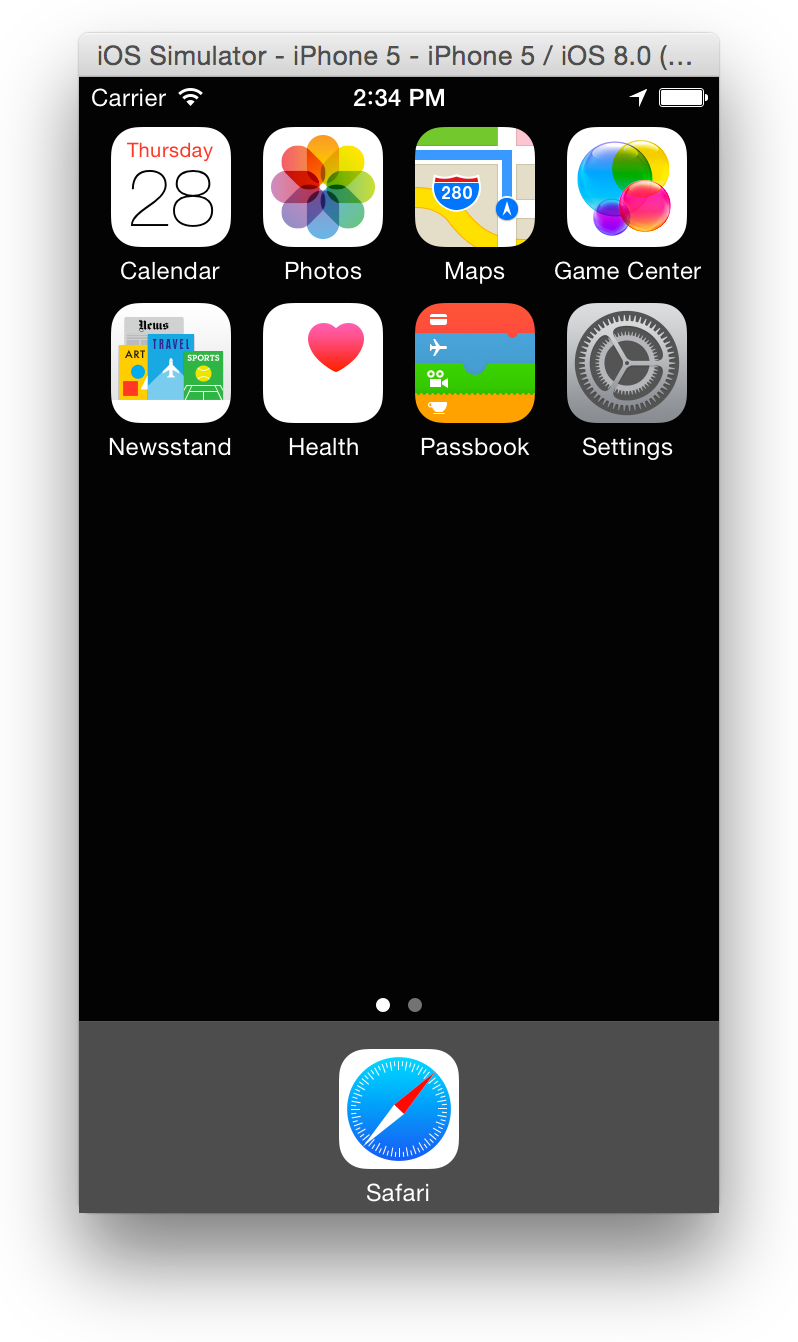Install Iphone Simulator On Mac
Connect to Simulators in Eggplant Functional
- In iOS Gateway, make sure that the Devices/Simulators pane is in Simulators context.
- Select the device and iOS version combination that you want to simulate from the list, then click Start in the General tab.
- In Eggplant Functional, open the Connection List from the Connection menu.
- Create a connection to the simulator. The simulated device’s IP address displays in the title bar of the main iOS Gateway window. The port number displays in the Simulators list in the iOS Gateway UI.
- To work with multiple simulators, repeat steps 2-4 as needed. Note: The more simulators you have running at once, the more performance can degrade.
To change how the available simulators are sorted, go to iOSGateway > Preferences > Simulator. You can sort by device type or iOS version.
You can create and delete iOS simulators as needed. The types of simulators your can create are determined by the active version of Xcode and the OS version running on your Mac.
To delete a simulator, select the simulator you want to delete in the Simulators pane, then go to Simulators > Delete Selected.
Apps on Simulators

i.e., /Users/mobileqa/Library/Developer/Xcode/DerivedData/MyApp-glsaqcpwolnnmaedrcqfqfnedoop/Build/Products/Debug-iphonesimulator/MyApp.app
To compress a .app file in the Finder on a Mac, right-click its icon and select Compress.
i.e., InstallApp ResourcesFolder('MyApp.app.zip')
To install an app on a connected simulator, follow these steps.
- Go to Apps > Install Application.
- Find and open the app you want to install from your Mac.
- The app appears in the list of installed apps on the right side of the iOS Gateway window.
Eggplantsoftware.com | 2021
The Remoted iOS Simulator for Windows is installed automatically as partof Xamarin in Visual Studio 2019 and Visual Studio 2017. To use it, follow these steps:
- Pair Visual Studio 2019 to a Mac Build host.
- In Visual Studio, start debugging an iOS or tvOS project. TheRemoted iOS Simulator for Windows will appear on your Windows machine.
Watch this video for a step-by-step guide.
Simulator window
The toolbar at the top of the simulator's window contains a number of useful buttons:

Home – Simulates the home button on an iOS device.
Lock – Locks the simulator (swipe to unlock).
Screenshot – Saves a screenshot of the simulator (stored in PicturesXamariniOS Simulator).
Settings – Displays keyboard, location, and other settings.
Other options – Brings up various simulator options such as rotation, shake gestures, and Touch ID.
Settings
Clicking the toolbar's gear icon opens the Settings window:
These settings allow you to enable the hardware keyboard, choose alocation that the device should report (static and moving locations areboth supported), enable Touch ID, and reset the content and settings forthe simulator.
Other options
The toolbar's ellipsis button reveals other options such as rotation,shake gestures, and rebooting. These same options can be viewed as a listby right-clicking anywhere in the simulator's window:
Touchscreen support
Most modern Windows computers have touch screens. Since the Remoted iOSSimulator for Windows supports touch interactions, you can test your appwith the same pinch, swipe, and multi-finger touch gestures that you usewith physical iOS devices.
Similarly, the Remoted iOS Simulator for Windows treats Windows Stylusinput as Apple Pencil input.
Sound handling
Sounds played by the simulator will come from the host Mac's speakers.iOS sounds are not heard on the Windows computer.
Disabling the Remoted iOS Simulator for Windows
To disable the Remoted iOS Simulator for Windows, navigate toTools > Options > Xamarin > iOS Settings and uncheckRemote Simulator to Windows.
With this option disabled, debugging opens the iOS Simulator on the connected Mac build host.
Install Iphone Simulator On Mac Download
Troubleshooting
Iphone Settings Simulator
If you experience issues with the Remoted iOS Simulator, you can view the logs in these locations:
Install Iphone Simulator On Mac
- Mac –
~/Library/Logs/Xamarin/Simulator.Server - Windows –
%LOCALAPPDATA%XamarinLogsXamarin.Simulator
Ios Simulator For Mac
If you report a problem in Visual Studio, attaching these logs might be helpful (there are options to keep uploads private).